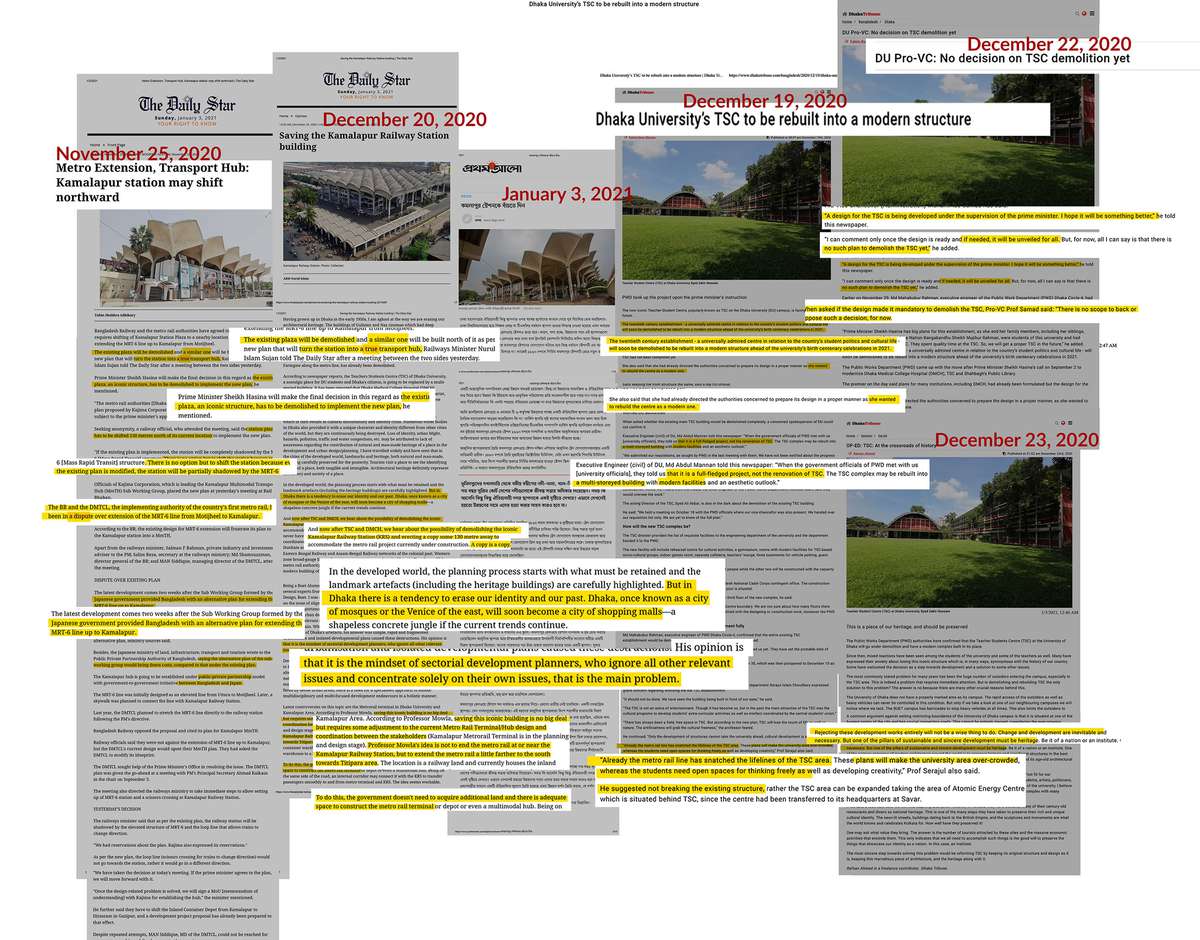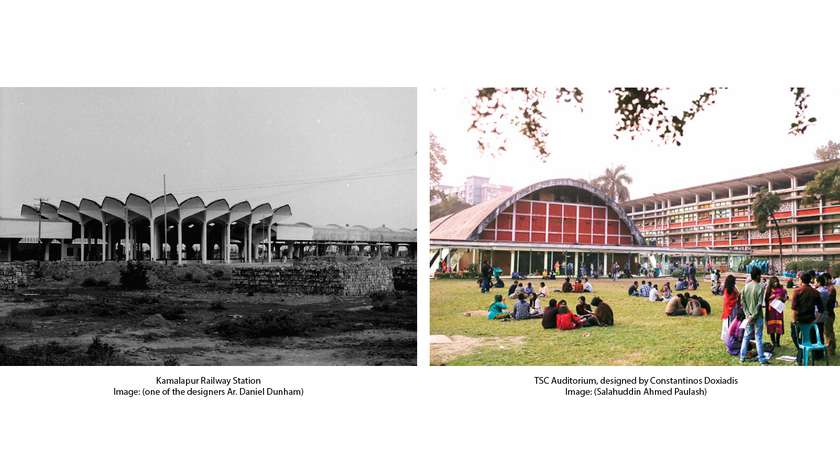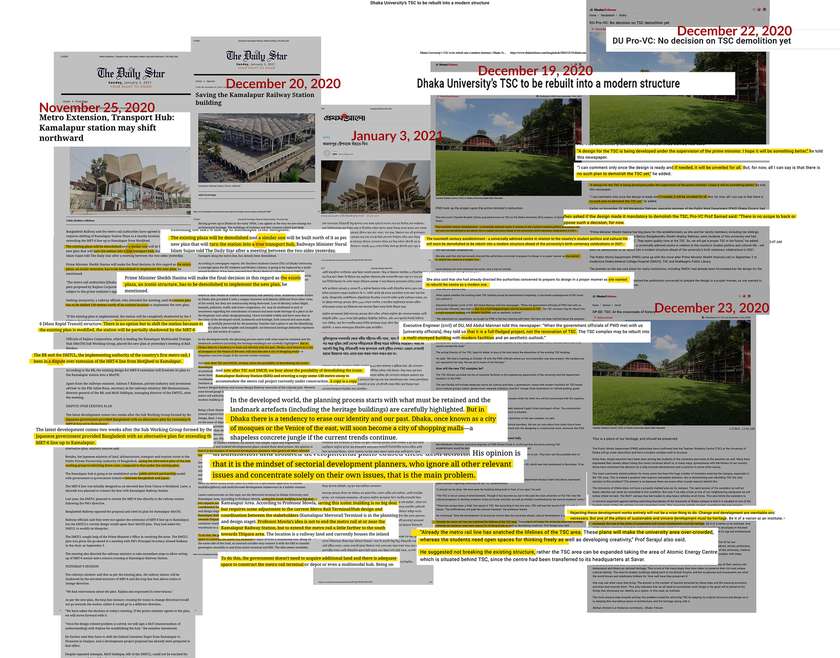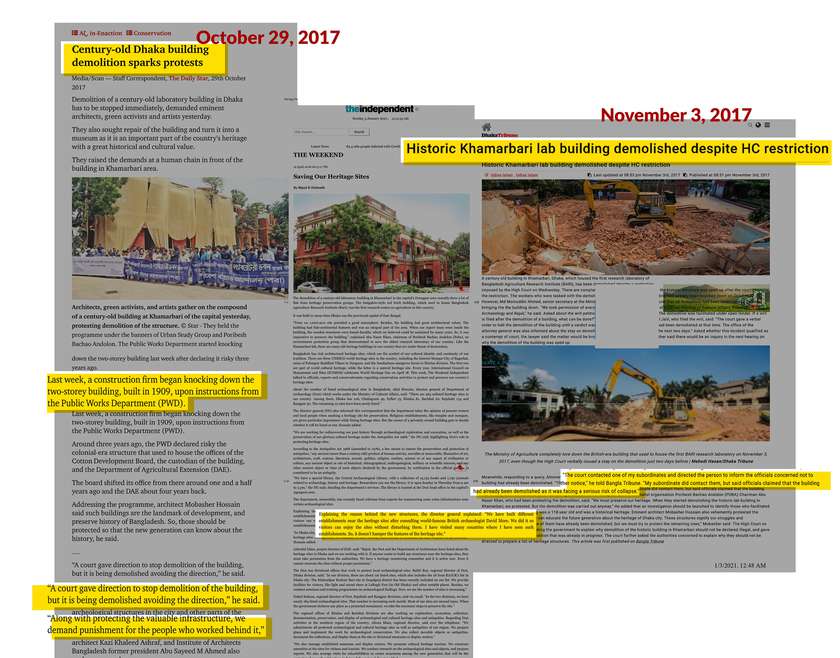Idea by
Bin Sayeed Bakhti, Manal Anis
Call for ideas 2021
Culture in Crisis
Culture in Crisis

- Site-specific cases
Within an evolving urban fabric built heritage represents a city’s collective memory, reinforcing a sense of identity. Sadly, perpetuating a promise of endless growth and modernity, they are often the first to be demolished. Decisions to destroy perfectly functioning historic buildings reveal government indifference and a gross lack of care toward preserving cultural identity, effectively alienating people from the city.
In Bangladesh, Kamalapur Railway Station and TSC Auditorium are two such historic sites: successful tropical modernist public places facing imminent demolition. However, virtual protests, risking government censor of digital information flow, require compelling and forceful storytelling. With exaggerated abstraction this emotive piece attacks government apathy and forces the public to question the future of Dhaka in our collective memory. Having garnered a lot of social media attention, it reflects the ongoing protest by concerned citizens against such policy-making.

Two vibrant public places that are part of a long-standing cultural legacy in the collective psyche of the people of Bangladesh.

Huge outcry from architects, historians and academicians erupted from late November 2020 in the wake of reports being published on government’s plan to demolish Kamalapur Railway Station and TSC Auditorium. Our digital piece lends a visual to the scores of protest urging the government to reconsider and withdraw their decision.

Another colonial-era heritage site in Dhaka - Khamarbari - was demolished in 2017, two days after the High Court issued a stay on the decision. Even though an official inquiry was supposed to be conducted into whether it qualifies as a contempt of court, nothing substantial came out of it.
Culture in Crisis
Culture in Crisis

- Site-specific cases
Within an evolving urban fabric built heritage represents a city’s collective memory, reinforcing a sense of identity. Sadly, perpetuating a promise of endless growth and modernity, they are often the first to be demolished. Decisions to destroy perfectly functioning historic buildings reveal government indifference and a gross lack of care toward preserving cultural identity, effectively alienating people from the city.
In Bangladesh, Kamalapur Railway Station and TSC Auditorium are two such historic sites: successful tropical modernist public places facing imminent demolition. However, virtual protests, risking government censor of digital information flow, require compelling and forceful storytelling. With exaggerated abstraction this emotive piece attacks government apathy and forces the public to question the future of Dhaka in our collective memory. Having garnered a lot of social media attention, it reflects the ongoing protest by concerned citizens against such policy-making.

Two vibrant public places that are part of a long-standing cultural legacy in the collective psyche of the people of Bangladesh.

Huge outcry from architects, historians and academicians erupted from late November 2020 in the wake of reports being published on government’s plan to demolish Kamalapur Railway Station and TSC Auditorium. Our digital piece lends a visual to the scores of protest urging the government to reconsider and withdraw their decision.

Another colonial-era heritage site in Dhaka - Khamarbari - was demolished in 2017, two days after the High Court issued a stay on the decision. Even though an official inquiry was supposed to be conducted into whether it qualifies as a contempt of court, nothing substantial came out of it.